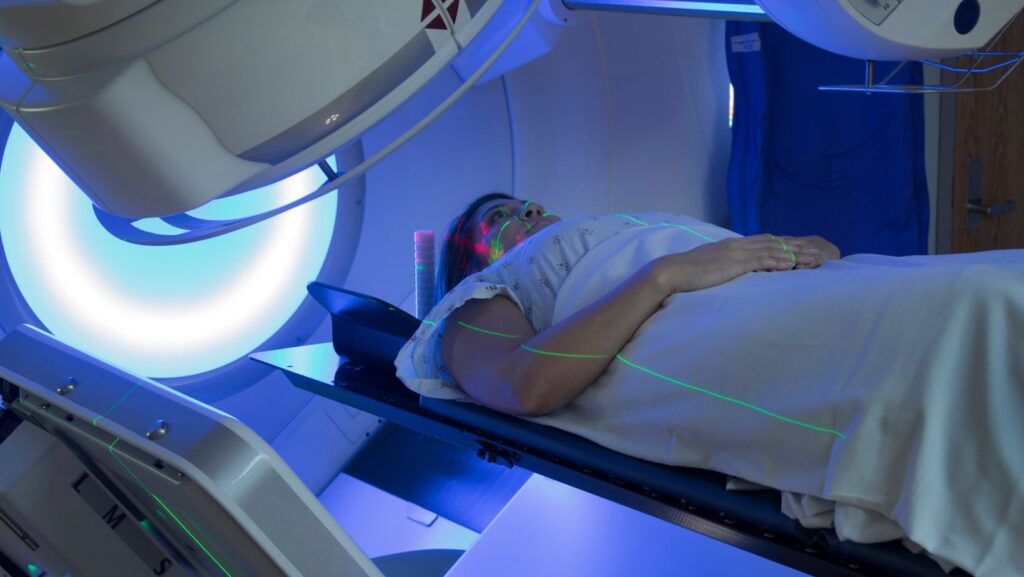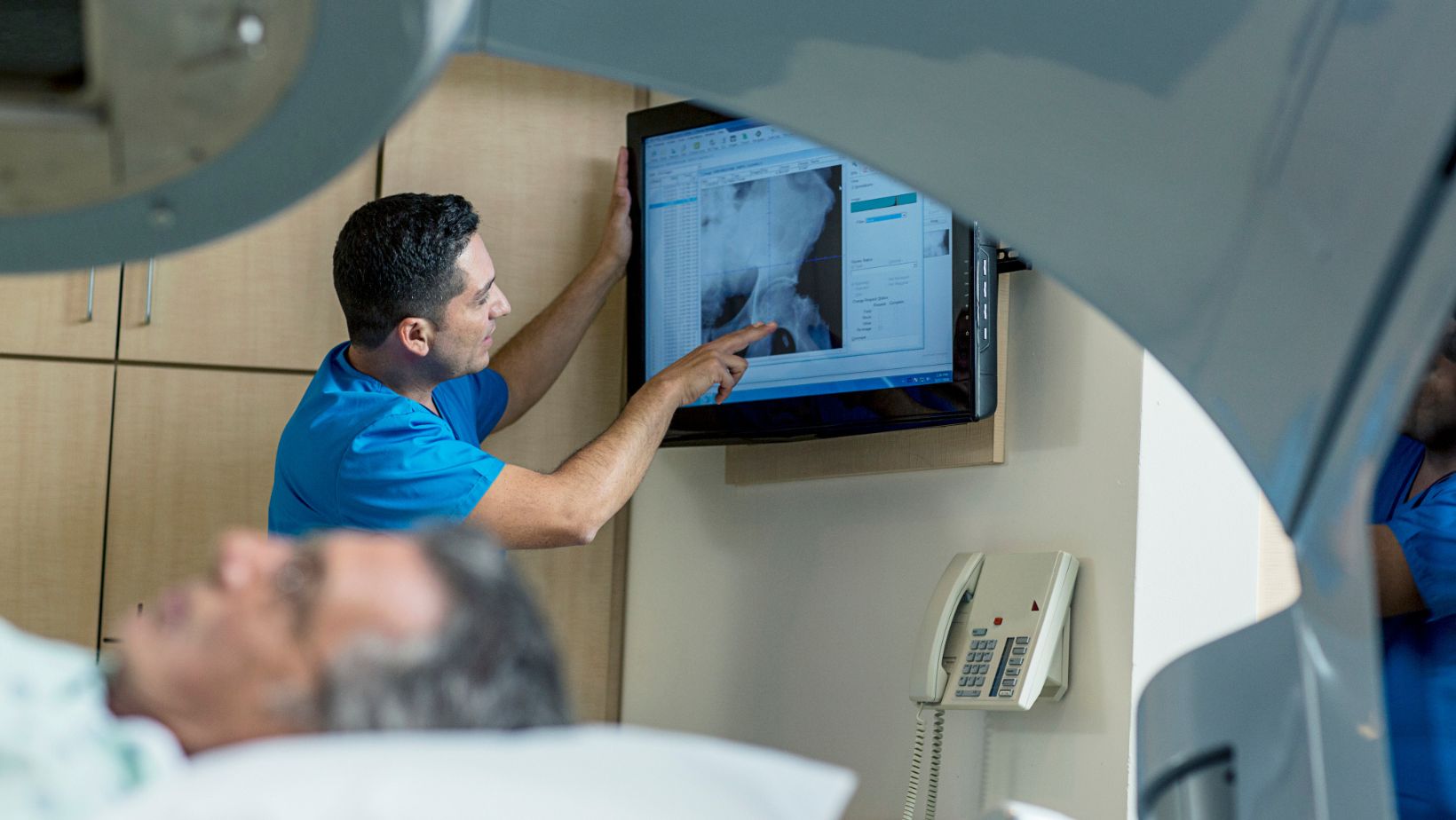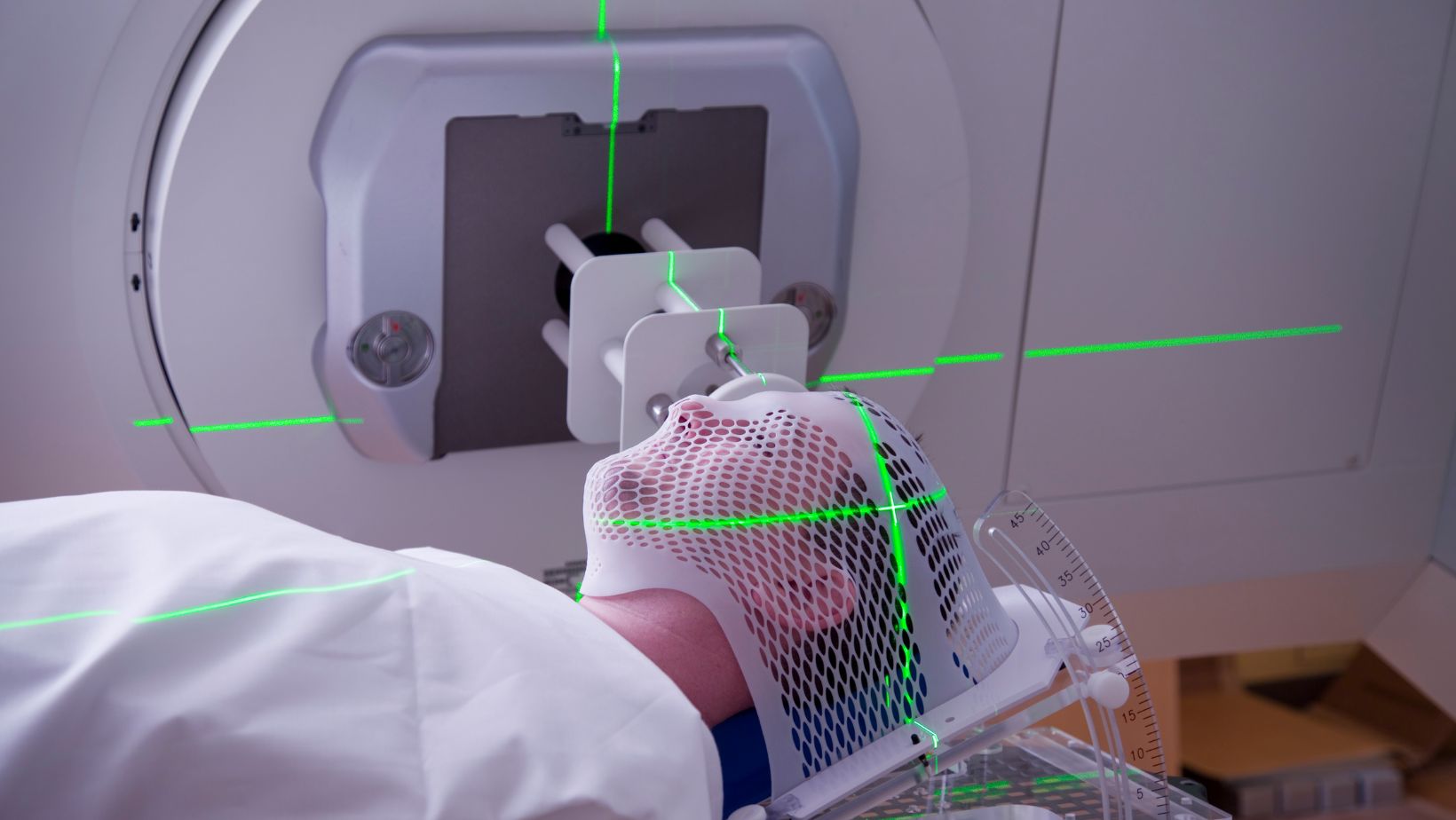
Advanced countries now offer groundbreaking Actinium-225 cancer treatment for late-stage prostate adenocarcinoma with metastasis. This innovative therapy demonstrates effectiveness even when hormone therapy, chemotherapy, and other methods can no longer control tumor growth. This cutting-edge treatment is available in Germany.
How Actinium-225 Works
Actinium-225 is a component of a radiopharmaceutical drug targeting prostate-specific membrane antigen (PSMA). This radionuclide serves as an alpha radiation source, bound to a carrier substance capable of attaching to cancer cells.
Following injection, Actinium-225 accumulates exclusively in tumor tissue, avoiding healthy cells. This selectivity is achieved through PSMA targeting, a protein found only in prostate tissue and cancer cells. The unique properties of alpha radiation allow it to deliver highly concentrated energy to cancer cells while minimizing damage to surrounding healthy tissue.

Actinium-225 administration through injection produces remarkable results in patients. This innovative treatment can effectively reduce PSA levels and tumor size, with some patients achieving complete objective response (disappearance of all tumors) and long-term disease remission. Careful dosimetry calculations ensure optimal radiation delivery to target tissues while maintaining patient safety.
Applications of Targeted Radiotherapy
Targeted systemic radiation therapy (radionuclide therapy) is indicated for:
- Late-stage prostate cancer
- Castration-resistant prostate cancer
- Cases where chemotherapy, targeted therapy, and immunotherapy are ineffective, excessively toxic, or contraindicated
- Presence of visceral metastasis (other radionuclide treatments are preferred for bone metastases)
This targeted therapy is employed in severe cases where prostate cancer progresses with detected metastasis and other treatments prove ineffective. Despite these challenging circumstances, Actinium-225 delivers promising results, reducing tumors, lowering blood biomarkers, and extending patient survival. Clinical observations have shown promising outcomes in patients with limited options with conventional treatments.
Comparing Actinium-225 and Lutetium-177
Currently, Lutetium-177 remains the first-choice radionuclide for prostate cancer treatment, although Actinium-225 potentially offers greater efficacy through more powerful alpha radiation, capable of creating double-strand DNA breaks in cancer cells.
Lutetium-177 maintains its position as the primary targeted radiotherapy option due to its extensive research background. The drug has been used for years, treating thousands of patients. Actinium-225, being newer, requires additional research before becoming standard therapy for late-stage prostate cancer.
Present applications of Actinium-225 include:
- Non-response to Lutetium-177 therapy
- Decreased efficacy after initial response to Lutetium-177
- Cancer progression following Lutetium-177 treatment
Researchers are also exploring simultaneous dual radionuclide use, though this approach remains experimental in most clinics.
Comparative studies show slightly higher risks of certain side effects with Actinium-225, including xerostomia (dry mouth). However, bone marrow damage with decreased blood cell production occurs less frequently, as alpha radiation has a shorter range than Lutetium-177’s beta radiation, typically not reaching bone marrow even when accumulating in bone tissue.
Treatment Accessibility
Innovations in nuclear medicine, precision medicine, cutting-edge experimental techniques, and personalized medicinal, radionuclide, and radiation therapy are successfully employed in developed European countries, including Germany.
Actinium-225 represents a breakthrough in oncology. Though still under research, it has shown promising results in treating metastatic prostate cancer. Patients can travel to Germany to receive targeted radiotherapy at world-leading clinics. Through Booking Health service, you can select a clinic and arrange your medical journey. Booking Health will schedule convenient appointment dates, and treatment costs will be reduced by eliminating additional fees for international patients.













